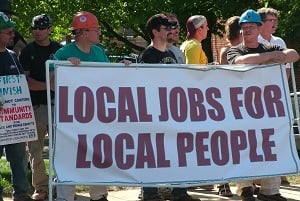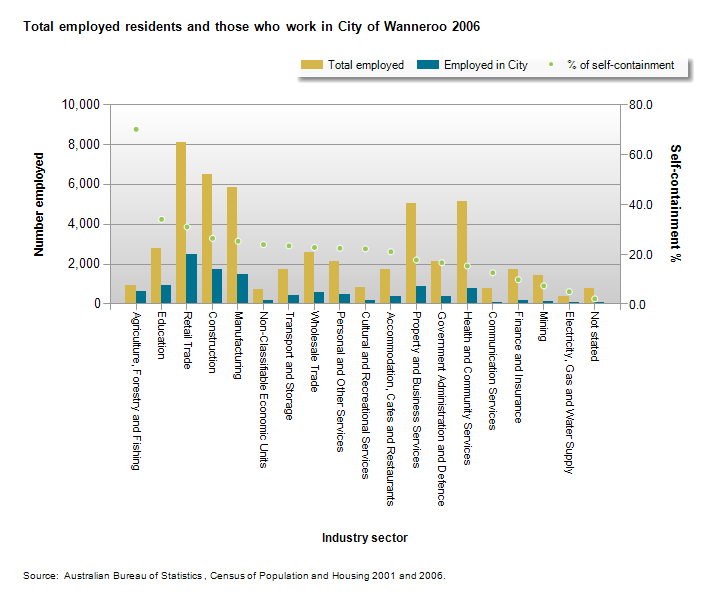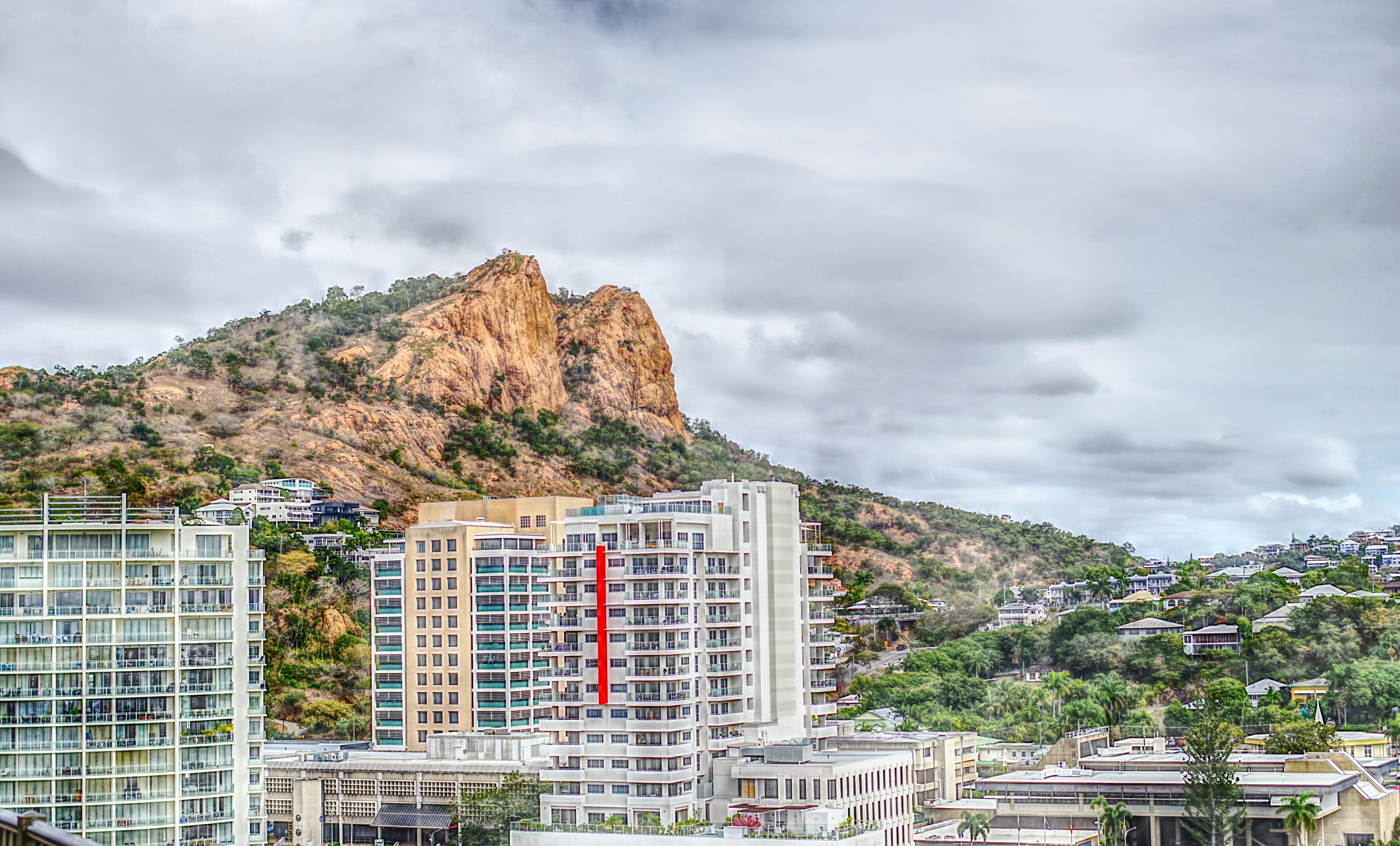Self-containment of employment and self-sufficiency of employment are two terms which are often used in Local Government, but they have varying definitions from place to place, and their usefulness also varies. The new, improved version of economy.id which was recently launched for .id’s 31 subscribing councils uses these terms explicitly, where the old version didn’t, so it’s worthwhile having a look at them and what they can do for you. This article will focus on self-containment of employed residents.

What is self-containment?
One of the often stated goals of local government economic development is to maximise self-containment of employment. In our cities, a lot of employment is concentrated in just a few areas (eg. CBDs and major industrial precincts). This can lead to some suburbs being mainly dormitory areas, with commuters adding to road and public transport congestion and reductions in quality of life for residents. So the goal of self-containment is to create jobs in the area which employ local people, becoming more economically, socially and environmentally sustainable.
Self-containment in economy.id is now included under the “Who are our residents->Self containment by industry” menu item in economy.id. For this example we’ll look at the City of Wanneroo, WA, but this applies to any council subscribing to economy.id.
Self-containment is defined as the percentage of employed residents who are employed within the boundaries of the Local Government Area (or region in the case of regional economy sites). In Wanneroo, the overall figure is 23.2%, indicating that less than a quarter of Wanneroo’s employed residents work in the local area. This varies by industry from a high of 70% for Agriculture, Forestry and Fishing (most farmers work on their own farms!) to a low of just 5% for Electricity, Gas and Water Supply workers. You can also see that self-containment increased slightly between the 2001 and 2006 Census, which is pleasing as the number of residents also grew a lot in that time.
The chart from economy.id shows the differences between industries, with the percentage self-containment shown as the dot chart against the right axis, and total employment compared to local employment as a bar chart against the left axis.

Is self-containment desirable?
Now a word of caution on this. While self-containment of employment is a reasonable goal to have, using Local Government boundaries may not be the best way to measure it. For instance, Wanneroo is a large council area. If you have a look at the detail of “Residents by place of work“, you’ll see that an additional 10.7% of residents work in the City of Joondalup (and 12.7% go to Stirling). As the map on that page shows, Wanneroo almost completely surrounds Joondalup, and there would be plenty of residents for whom Joondalup would be closer than other parts of Wanneroo. So you do need to have a look at the map of actual destinations to get a clearer picture of whether people are travelling a long way to work, or just outside your boundaries. This map can show which industries people need to travel to find work, and which industries people find work in the local and nearby areas.
In the end, Local Government boundaries are arbitrary and don’t necessarily reflect transport corridors or employment catchments, so for metropolitan areas, aspiring to have a level of self-containment of 80%+ is probably unreasonable (even City of Sydney, with the highest concentration of jobs in Australia, has only 60% self-containment of its residents) – workers in metropolitan LGAs have a choice of employment across the metropolitan area and some will always choose to work some distance from home.
Generally, metropolitan areas will have low levels of self-containment, unless they are a major employment destination. The highest levels of self-containment are found in regional towns and rural areas where distances mean that commuting to another town is not practical. You can access self-containment statistics for Local Government Areas at .id’s demographic resource centre.
In the next article we look at the opposite calculation – self-sufficiency, and what it means.
.id is a team of population experts who combine online tools and consulting services to help local governments and organisations decide where and when to locate their facilities and services, to meet the needs of changing populations. Access our free demographic resources and tools here.











